'Heroic efforts': How Arizona counties, nonprofits are responding to migrant street releases
NOGALES — John Adrian Sarango Sanchez waited to board his bus.
A yellow manila envelope and a nearly empty Coke bottle, with only a swig of soda remaining, was clinched in his left hand. In his right, he grasped the worn handles of his small, navy blue duffle bag.
The white coach bus idling on North Terrace Avenue in Nogales was only the latest in a string of buses that Sarango Sanchez, an asylum seeker from Ecuador, had to board. He fled his home because of the dangerous conditions and death threats he received.
“It’s something very hard, " Sarango Sanchez said about his journey.
After flying into El Salvador, he boarded bus after bus until he got to Sonoyta, Sonora, the city across the border from Lukeville. Sarango Sanchez crossed the border and presented himself to Border Patrol.
Two days later, he stood in line on a recent morning with about a dozen other asylum seekers more than 100 miles from where he had first entered the country. The group waited to board their bus heading to Phoenix as a dozen other asylum seekers waited for a similar bus that would take them to Tucson down the road.
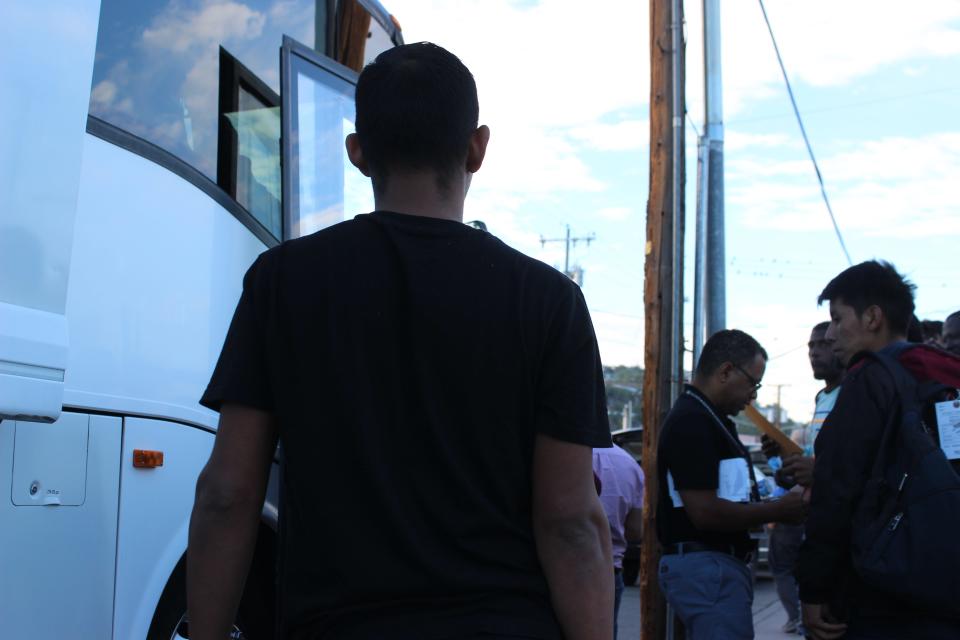
The day’s heat had not yet set in as dawn had only broken about an hour before in the border community. A crowd of young students gathered across the street from Sarango Sanchez, waiting for their own bus to take them to school.
The Dennis DeConcini Port of Entry was only about a block south of the buses. The awakening city was peaceful, even as asylum seekers were being released onto its streets.
Initial reporting: Customs and Border Protection releasing migrants onto Cochise County streets
The Border Patrol began releasing asylum seekers into southern Arizona communities on Sept. 13 as they reached overcapacity in their facilities. Nonprofits and county and city governments have since stepped in to prevent asylum seekers from being released into communities without any transportation or shelter resources.
Six of Arizona’s 15 counties are in some way involved in responding to the releases. Up to 22 buses run through the state daily, according to Cochise County Emergency Management.
Still, resources are being spread thin as governments and nonprofits attempt to respond to the sustained increase in asylum-seeker arrivals in Arizona. Officials underscored the federal government’s absence in responding to the issue as communities bear the brunt of the work.
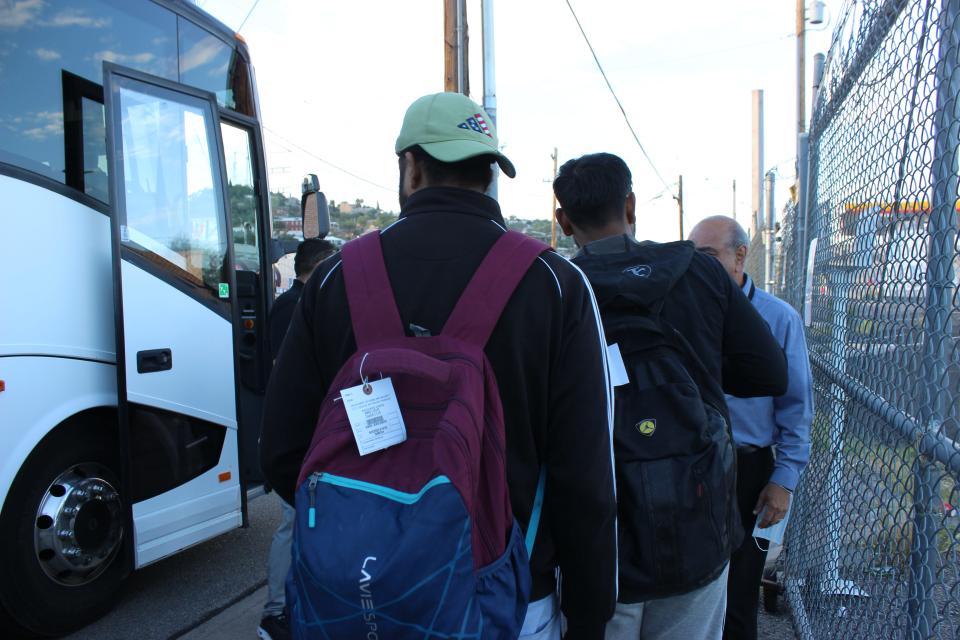
Why are asylum seekers released into border communities?
The street releases come after the Border Patrol’s Tucson Sector set a 15-year high in migrant encounters in July, becoming the busiest sector along the Southwest border. The sector documented an average of nearly 1,900 migrant encounters each day from Sept. 8-14, according to John Modlin, chief patrol agent of the Tucson Sector.
In August, the Tucson sector documented 48,754 migrant encounters, representing a 24% increase from the month prior, according to U.S. Customs and Border Protection data.
The Border Patrol recorded 181,059 encounters between ports of entry along the Southwest border in August, per Customs and Border Protection data.
The Border Patrol can only hold migrants for a certain amount of time in its facilities, and if the agency is at capacity, it resorts to releasing asylum seekers under parole directly into border communities that are often unequipped to help them.
Asylum seekers are medically and criminally vetted by Customs and Border Protection before they’re released.
State busing program: State now busing asylum seekers to Phoenix with shelters in southern Arizona full
Coordinated Border Patrol releases have been happening since May with Pima County and Arizona Department of Emergency and Military Affairs buses transporting asylum seekers from rural border communities to larger cities twice a day.
On Sept. 13, however, the Border Patrol stopped waiting for state- and county-funded buses before releasing asylum seekers at designated drop-off points. The change resulted in handfuls of asylum seekers being erratically released every couple of hours with little information about where they were or what to do next.
Street releases began in Bisbee, Douglas, Naco, Nogales and Casa Grande from sunrise to sunset. Many county and city officials were given short to no notice about the repeated releases.
The border communities lack the needed transportation and shelter infrastructure to care for released asylum seekers. The communities are often hundreds of miles away from the nearest airport or centralized bus terminal.
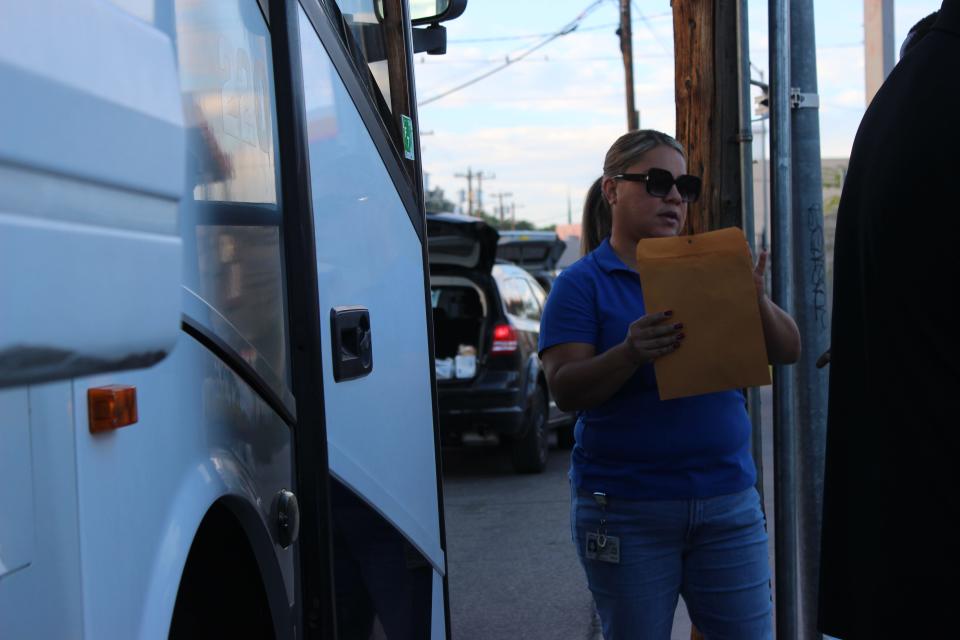
'Heroic efforts' prevent street releases in Pima County
Border Patrol’s policy shift of irregularly releasing people into communities while offering little to no information has made it more difficult for nonprofits to prepare for the number of people they may have to receive.
“We're kind of wandering around in the dark with a lighter instead of what we used to have is a relatively lit room,” said Diego Piña López, associate director of Casa Alitas.
“What's been challenging for us is this change of temperament on top of the volume.”
Casa Alitas, which provides shelter and transportation to asylum seekers in southern Arizona, is receiving more than 1,000 people per day on average, according to Piña López.
The Casa Alitas Welcome Center was at capacity “many times” from Sept. 7-13, according to a Pima County situational border report. Casa Alitas’ received a daily average of 788 arrivals and 5,513 total arrivals for the week.
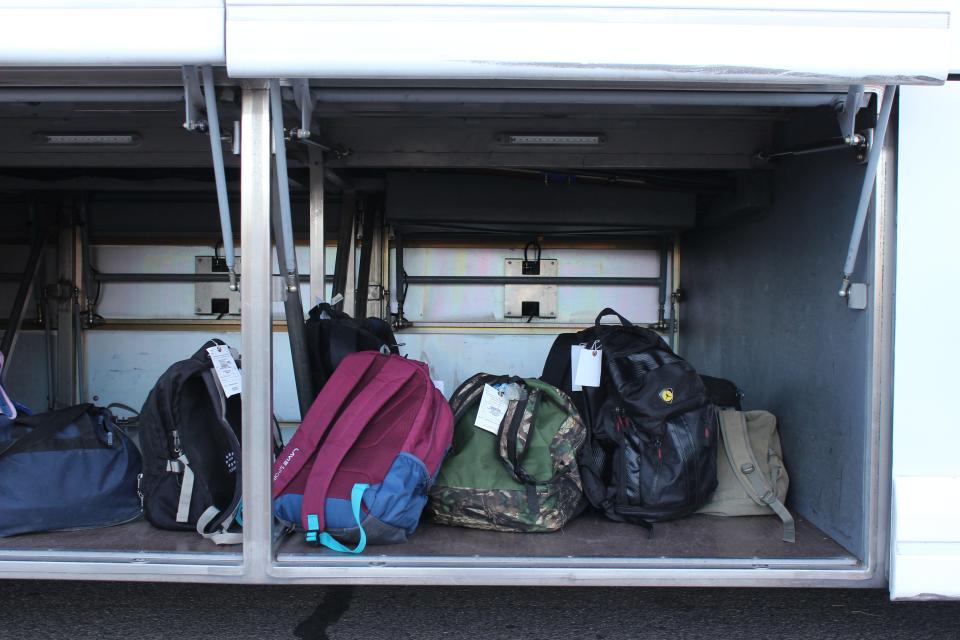
There were an estimated 1,300-1,400 people in shelter circulation daily. The numbers strained the shelter’s capacity and staffing.
“Right now, I have no idea what's happening to me in two to three hours,” Piña López said.
Pima County is “the closest it's ever been” to unsheltered street releases, according to Mark Evans, Pima County communications director. The county is not seeing a decrease in the number of people being released, according to Evans.
“So far, heroic efforts have prevented those from day to day,” Evans said. “We're now into ten days at this level, and we're pretty taxed and we're hoping for some relief.”
Evans underscored that the releases are a federal problem and urged for more assistance from the federal and state government.
Releases prevented: AZ busing program prevents street releases of nearly 5K migrants in border communities
“There's no reason local governments should have to do this as a defense against having thousands of people unsheltered on their streets,” Evans said.
Rep. Raúl Grijalva, D-Ariz., on Sept. 15 sent a letter to President Joe Biden and Homeland Security Secretary Alejandro Mayorkas raising concerns over the lack of federal coordination and cooperation in responding to the releases.
“Subjecting migrants, including families, to this expedited process by way of street releases in parts of rural Arizona without the necessary resources, puts intense strain on our communities and is cruel.” Grijalva wrote in the letter.
Grijalva urged the Biden administration to work with local governments and nonprofits while also surging funding to their response efforts.
“No migrant family or individual should be forced with the task of navigating a new country without help, many of which are struggling with language barriers. It is inhumane and against our values,” Grijalva wrote in the letter.
Santa Cruz County response runs smoothly with limited resources
José Arriola rifled through dozens of slips of laminated paper collected on a metal binder clip. Each slip had a basic informational script to inform arriving asylum seekers about where they were and what comes next.
The slips were translated into French, Spanish, Bengali, Nepali, Arabic, Hindi, Punjabi and Wolof, a language spoken extensively in the west African countries of Senegal, Mauritania, Mali and The Gambia.
If the slips weren’t enough, Google Translate was whipped out.
Arriola, deputy director of Santa Cruz County Health and Human Services, watched the couple dozen asylum seekers board the pair of coach buses in Nogales on a recent morning. Arriola then received a call and the buses were delayed for about an hour longer — the Border Patrol was dropping more people off.
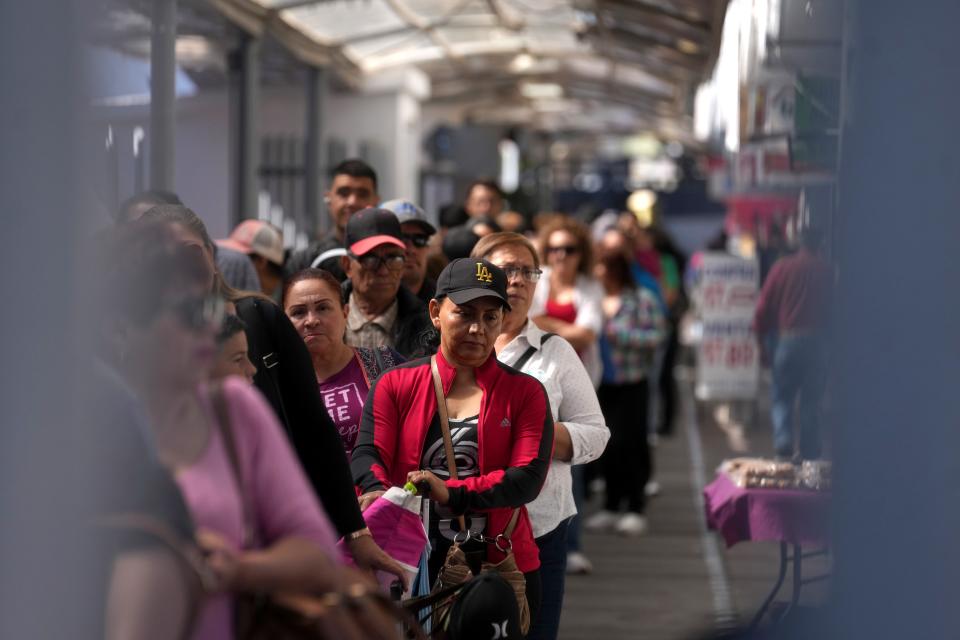
A Border Patrol bus soon dropped off another couple dozen asylum seekers across the street from the coach buses. Arriola separated them into smaller groups and ushered them across the street to board the Phoenix and Tucson-bound buses.
Their CBP-issued bracelets and documents were then checked before they boarded. The entire drop-off and pick-up process runs smoothly three times a day, overseen by county officials.
Arriola has been a key figure in coordinating the county’s response to the releases. Officials must work within the funding and resources available to Arizona’s smallest county.
“It’s a game of chess,” Arriola said. “For now, it’s working; There’s better ways to do it but, with the resources there are, we’re doing the best we can.”
The Santa Cruz County Board of Supervisors released a request for volunteers on Sept. 20 to help with greeting and preparing asylum seekers for transportation to Phoenix and Tucson. The volunteers would help board the buses while providing information, water and snacks to people.
Arriola estimates that an average of 250 people are dropped off in the city daily. The largest numbers usually come in the morning when the Border Patrol releases people who they’ve processed overnight.
Asylum seekers oftentimes don’t even know where they are when they’re dropped off. Many ask where the city’s airport is. Recently, asylum seekers have been arriving from Senegal, India, Guatemala, Ecuador and Mexico.
“They’re coming from a situation that’s very stressful for them,” Arriola said. “For us, it’s that they go where they want to be in the quickest and safest way they can.”
Port officers with Customs and Border Protection's Office of Field Operations were pulled from their duties at Arizona’s ports of entry beginning on Sept. 16 to help Border Patrol process asylum seekers in their Tucson and Yuma sectors, according to officals.
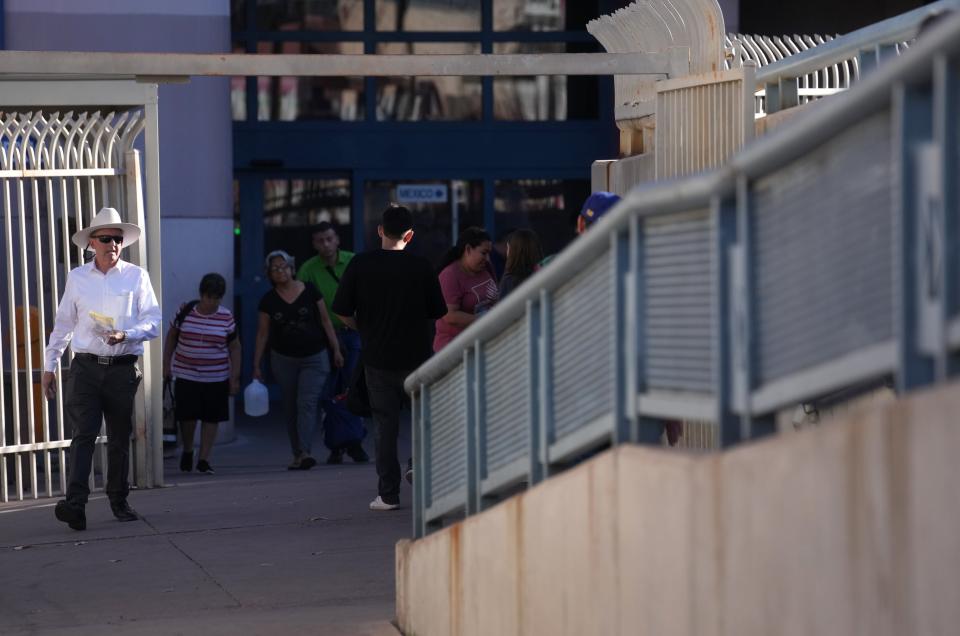
The temporary efforts will focus primarily on families and unaccompanied children who arrive in between ports of entry. The redistribution of officers could result in longer wait times for pedestrians and vehicles at ports of entry.
The directive has reduced the number of vehicle lanes available at Nogales ports of entry in half, according to Nogales Mayor Jorge Maldonado.
The Mariposa Port of Entry went from eight lanes to four while the DeConcini port went from four lanes to two and, occasionally, three, not including the Secure Electronic Network for Travelers Rapid Inspection (SENTRI) lane.
“That's been a back-breaker,” Maldonado said. “I hope that CBP really looks at the harm that it's doing to the city with the effect of taking the number of agents and sending them to Border Patrol.”
Arizona Gov. Katie Hobbs announced Friday a $10 million grant to the Nogales Police Department to help them following CBP’s decision to reassign port officers. The money will go toward communications technology.
“Time and again I’ve asked the Biden administration for assistance at the border, but instead they have chosen to redirect resources to speed the release of migrants without the support and coordination our local communities deserve,” Hobbs said in a written statement.
“Arizona is being overwhelmed, and we can’t afford to lose manpower at our ports of entry.”
The reassignment efforts will continue on an as needed basis, per Customs and Border Protection.
Border Patrol agents cannot release people after sundown and before sunset. There haven’t been any official overnight stays in Nogales, Arriola said. Officials check the city for any migrants staying overnight unsheltered, he said.
If asylum seekers are released after the last bus leaves the city at 3 p.m., they typically arrange their own travel by paying for one of the many shuttle and taxi services available nearby, Arriola said.
Asylum seekers are not required to board the Pima County-funded buses. Officials cannot force people to board but they give asylum seekers information and the choice to take the bus.
Most people board the buses bound for Tucson or Phoenix. Others may catch a shuttle or taxi to take them to where they need to go while some may wait in the city for family or sponsors to pick them up.
Arizona is often only a stop along people’s journey, with many having family or sponsors in the interior of the country.
Releases continue in Cochise County, Casa Grande tapers off
In the span of one week, there were 519 uncoordinated and unsheltered releases in Cochise County, according to Cochise County Emergency Management data. The data included releases from Sept. 13-19 in Naco and Douglas.
Up to seven DEMA and Pima County-funded buses are running in Cochise County daily, according to Cochise County Emergency Management.
Street releases in Bisbee stopped on Sept. 17 as buses began picking asylum seekers up directly at the Border Patrol station, according to Bisbee Mayor Ken Budge. The city established a temporary migrant shelter and has volunteers ready to step up if needed, Budge said.
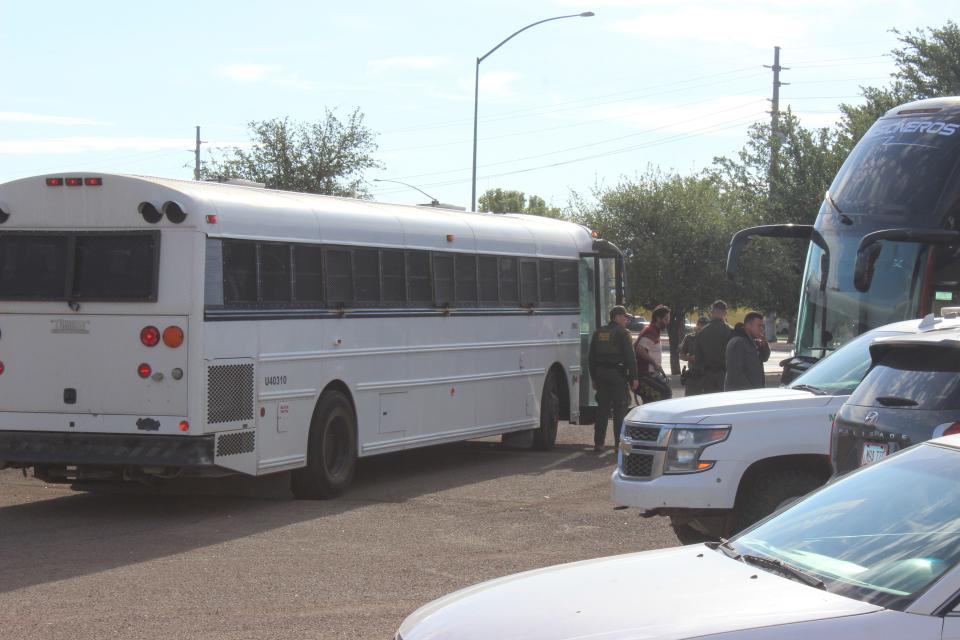
Asylum seekers previously were dropped off in a Safeway parking lot in Bisbee.
Casa Grande was only really impacted by the street releases on Sept. 13 and Sept. 14, according to Casa Grande Police Chief Mark McCrory. City officials encountered a total of 52 asylum seekers who Border Patrol dropped off at a convenience store in the southeast portion of the city.
The Border Patrol notified city officials before the releases happened. Officials then helped transport them to Phoenix and Phoenix Sky Harbor International Airport.
Only four asylum seekers of the 52 were unable to arrange transportation, McCrory said. Officials subsequently arranged for taxis to take the four people from Casa Grande to the airport.
Nonprofits and faith-based organizations, including the International Rescue Committee, helped respond to the releases in the city. The IRC has been working directly with Border Patrol since Sept. 14, according to McCrory.
“We had a group of people that worked closely together to try to make sure that asylum seekers weren't stranded, especially in the heat,” McCrory said. “We've been fortunate that things have gone smoothly for Casa Grande and our community, and we are prepared if there's an increase in those numbers.”
While there may have been releases after the initial city response, there’s been nothing that’s had an impact on city resources, McCrory said. Officials have plans ready to put in action if the number of releases rises again, he added.
Phoenix-area shelters step up to prevent more releases
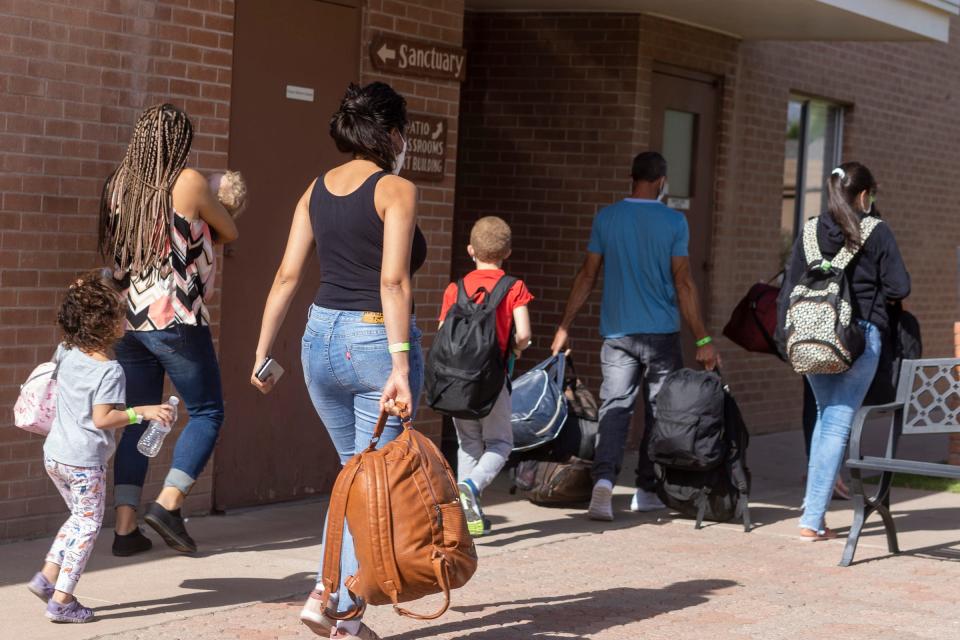
Shelters in the Phoenix area are seeing a large spike in the arrival of asylum seekers. But officials say they are willing to accept more to prevent federal authorities from releasing migrants on the streets.
At the Monte Vista Baptist Church in Phoenix, arrivals of asylum seekers have more than tripled, said Angel Campos, the senior pastor. On some days, the church has received as many as 150 asylum seekers, compared to about 32 daily in the middle of the summer.
The spike in arrivals has strained the resources of the church, which mostly serves working-class Latino families, Campos said. One day this week, Campos rushed to Costco to buy as many roasted chickens as possible after a bus carrying 68 asylum seekers arrived at the church at the last minute.
The church has the capacity to comfortably receive 75 to 100 asylum seekers daily, Campos said. But because of the sudden influx of asylum seekers arriving at the southern border, the church is willing to increase capacity to prevent migrants from being released on the streets, he said.
“We are fearing that these people will (wind up on) the streets,” Campos said. “All we want is to be able to help these people.”
Busing program announced: Gov. Katie Hobbs announces expanded migrant bus routes ahead of Title 42's end
Previously, the church was only receiving asylum seekers apprehended by the Border Patrol in the Yuma area and then released by U.S. Immigration and Customs Enforcement, Campos said.
Since the number of asylum seekers crossing the border in the Tucson sector skyrocketed over the past several months, the church has been receiving asylum seekers transported to Phoenix on private buses after being released by the Border Patrol in southeastern Arizona, Campos said.
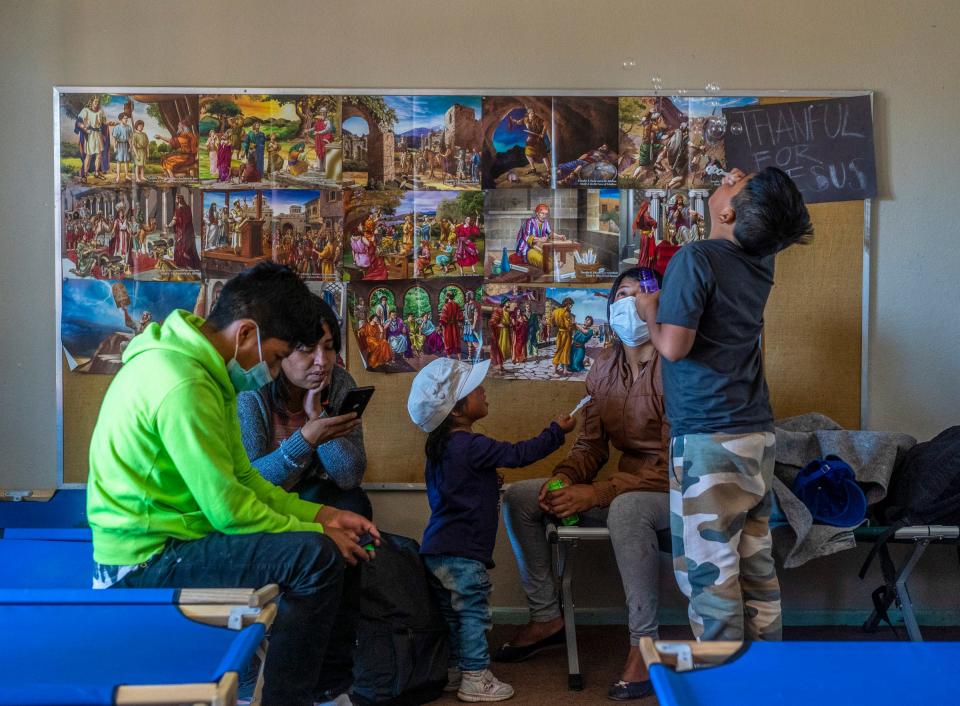
Campos believes the Border Patrol has been forced to release asylum seekers on the streets in Cochise County because there haven’t been enough buses to transport asylum seekers to shelters in Phoenix.
Most asylum seekers who arrive at the church leave the same day, Campos said. The church helps them make arrangements to travel at their own expense to reunite with sponsors, usually in other states, he said.
At Iglesia Cristiana El Buen Pastor, a Spanish-speaking church in Mesa, the congregation has offered to receive additional asylum seekers on Tuesdays to prevent the Border Patrol from releasing them on the street, said Hector Ramirez, the pastor.
The church currently only receives asylum seekers on Thursdays, dropped off by ICE, Ramirez said.
“I told them (federal authorities) you can bring me 60 on Tuesdays and 60 on Thursdays.” Ramirez said. “But it turns out they only send 32 on Thursdays from the ICE office in Phoenix.”
At the Welcome Center, the average number of asylum seekers arriving daily has soared from 70 in June to 111 daily in July, and 143 daily in August, officials said.
Through Sept. 18, the center was receiving on average 192 asylum seekers daily. Over the past week, the number has increased to about 250 asylum seekers daily.
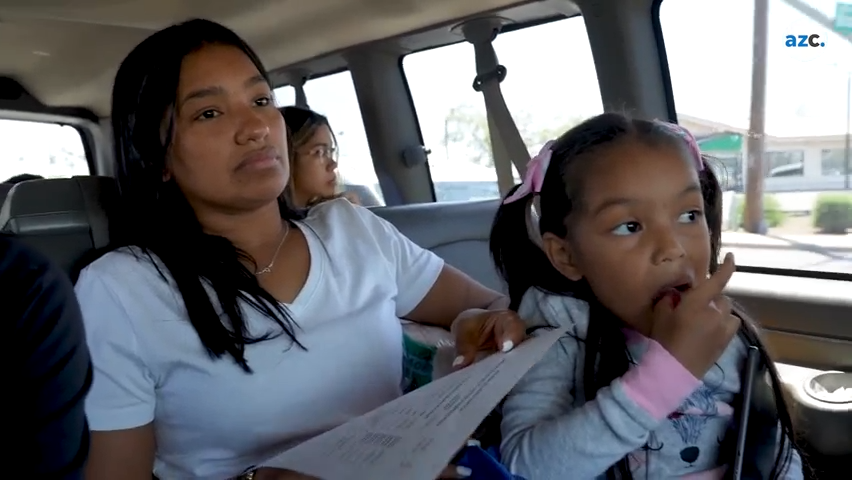
The center has the capacity to receive a maximum of 300 asylum seekers daily, officials said.
"Street releases are not in the best interests of vulnerable asylum seekers nor local communities,” communications coordinator Nisha Datt said in a written statement. “All partners must coordinate to ensure asylum seekers are received in a safe, dignified, and orderly way, with access to shelter, transportation, and essential humanitarian aid.”
“The IRC is in close contact with federal agencies, local authorities, and nonprofit partners to determine the best way to address the situation."
The center provides humanitarian reception for asylum seekers, including shelter, food, medical screening and care, legal orientation, and travel assistance. The majority leave within 48 hours and travel to reunite with family members and sponsors across the nation.
How you can help
Campos, the pastor at Monte Vista Baptist Church, said the church needs disposable towels, plates, bowls and cups. To donate items, call him at 480-450-6062.
Ramirez, the pastor at Iglesia Cristiana El Buen Pastor, said the church needs bottled water, soda, juice, coffee, sugar oil, meat, nutrition bars, crackers and clothing for children, women and adults. He can be reached at 480-343-7361.
To volunteer with Santa Cruz County’s response efforts you must be at least 18 years of age. Training will be provided and duties may include: Greeting released migrants, providing information to migrants, distributing water and snacks to migrants and assisting staff with boarding migrants on buses.
Volunteer shifts will be available from 7 a.m. to noon and noon to 6 p.m., Sunday through Saturday. For more information or to volunteer, please contact Frances Paredes at 520-375-7736.
Have a news tip or story idea about the border and its communities? Contact the reporter at josecastaneda@arizonarepublic.com or connect with him on X, formerly known as Twitter, @joseicastaneda.
Daniel Gonzalez covers race, equity and opportunity. Reach the reporter at daniel.gonzalez@arizonarepublic.com or 602-444-8312.
This article originally appeared on Arizona Republic: Arizona cities, nonprofits step up as migrant street releases continue

